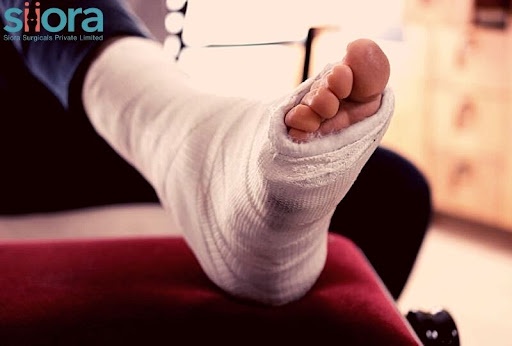Osteomyelitis is a condition in which bones get infected by bacteria or fungi while most cases are reported to be of bacteria. Now, the infection could reach the bone in multiple ways. One, through the bloodstream as a result of an infection in any other body part, and two, as a direct infection that occurs after a bone injury or orthopedic surgery.
People who smoke frequently are more prone to developing this condition plus, diabetics may experience osteomyelitis in their feet as a result of foot ulcers. Osteomyelitis can be successfully treated with medication whereas only chronic cases will require surgery. Surgical intervention to treat osteomyelitis is not known to require the use of orthopedic surgical instruments and trauma implants. This condition could develop at any age irrespective of gender or race.
Register for AAOS annual conference 2023 to know about advancements in the management and treatment of various orthopedic conditions.
If treatment is ignored, delayed, or not taken properly, osteomyelitis could leave permanent damage to the bone.
How is Osteomyelitis caused?
Microorganisms are known to cause osteomyelitis while the most detected one is Staphylococcus Aureus. Staph. Aureus is known to be commonly present on the skin in some people but does not cause any infection. This bacterium could travel to bone through the bloodstream. Plus, it could also spread through nearby infections. If there is a cut or wound, the bacterium can easily invade. If the bone breaks, then also Staph. Aureus can infect the bone easily causing osteomyelitis.
Besides all this, those who have weak immune systems are also prone to get infected with Staph. Aureus.
What Are the Signs and Symptoms of Osteomyelitis?
Symptoms of osteomyelitis may vary depending upon the severity of the condition. It is noticed by Staph. Aureus is known to infect children more quickly than adults and the bacteria generally travels to infect bones through the bloodstream. When the bones get infected by bacteria traveling through the bloodstream, the condition is known as hematogenous osteomyelitis.
In adults, the symptoms occur more slowly and that includes fever, chills, pain, swelling, redness, and irritability. Besides this, nausea, stiffness, and tenderness on the affected site may also be noticed. If osteomyelitis occurs in people suffering from diabetes or peripheral vascular disease, pain or fever might not be experienced.
Back pain may be experienced in people suffering from osteomyelitis of the spine.
How Is Osteomyelitis Diagnosed?
Complete medical history check and a thorough physical examination are important for the correct diagnosis of osteomyelitis During these examinations, the doctor will ask certain questions related to any past infections, injuries, and traumas to identify the right cause of the condition. The doctor will also monitor the affected area for pain, swelling, tenderness, warmth to touch, and other signs. The range of motion of the affected area is also something that will be monitored by the doctor.
Once the physical examination is done, the doctor may order certain pathological and imaging tests like complete blood count, CRP, blood cultures, ESR, x-ray, CT scan, and MRI. These tests help identify that there is an infection in the body or not and the changes occurring in the bones.
How Is Osteomyelitis Treated?
Analgesics and antibiotics are the medications generally prescribed by the doctor for the treatment of osteomyelitis and they are highly effective. Maximum cases of osteomyelitis can be treated at home with medication of around 4-6 weeks. The aim of treatment is to eliminate the infection and prevent it from becoming worse (chronic).
In case of open wounds, drainage is done using needle aspiration. The fluid withdrawn may also be used for cultures to identify the bacteria that has caused the infection, but for that, deep aspiration is required.
People suffering from chronic osteomyelitis might require surgery for the removal of foreign objects, debridement, stabilization of affected bone, and restoration of the blood flow to the bone. Orthopedic implants like metal rods, plates, & screws might be required for bone stabilization.
To get international standard quality orthopedic devices, contact Siora Surgicals Pvt. Ltd. Operating for more than three decades, the company specializes in manufacturing a wide array of trauma implants that are used for the fixation of different orthopedic conditions. Siora is also looking to become one of the reliable orthopedic instruments suppliers in Sri Lanka.


No comments yet